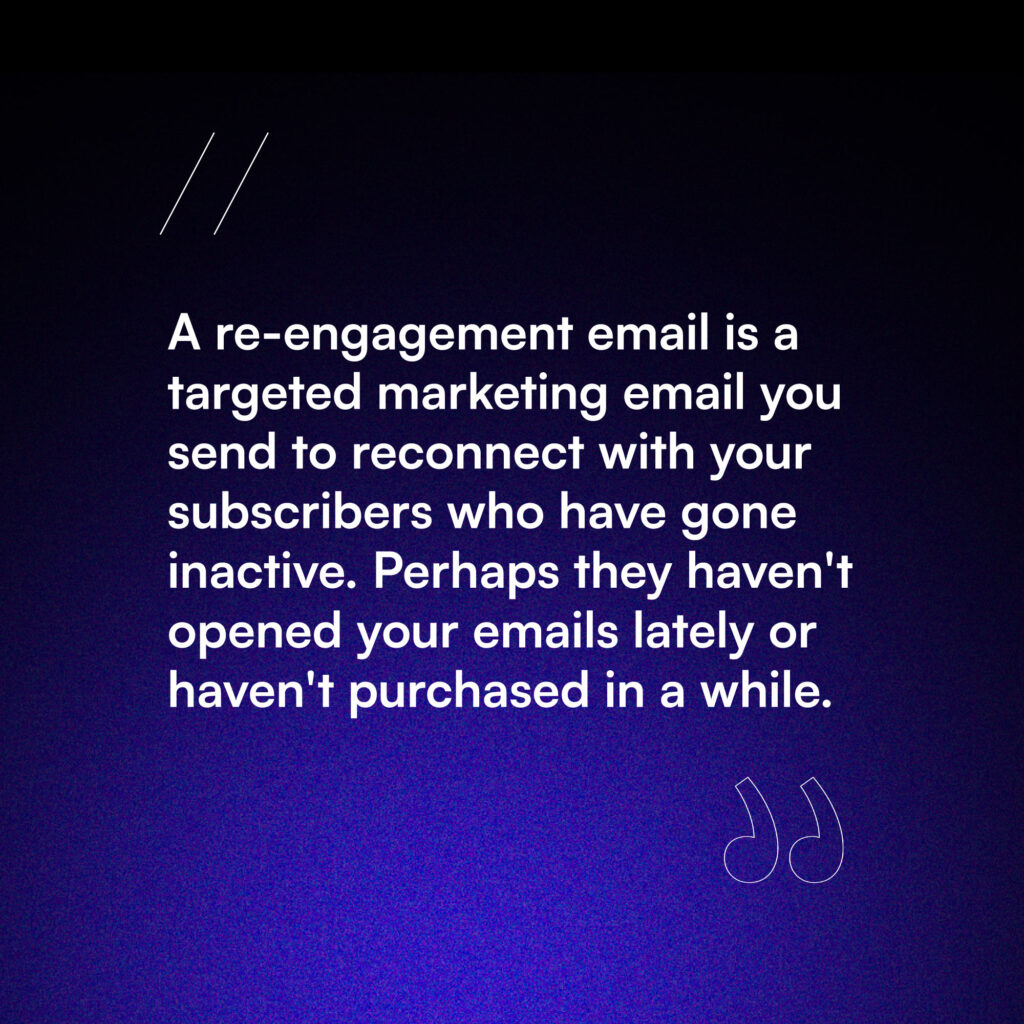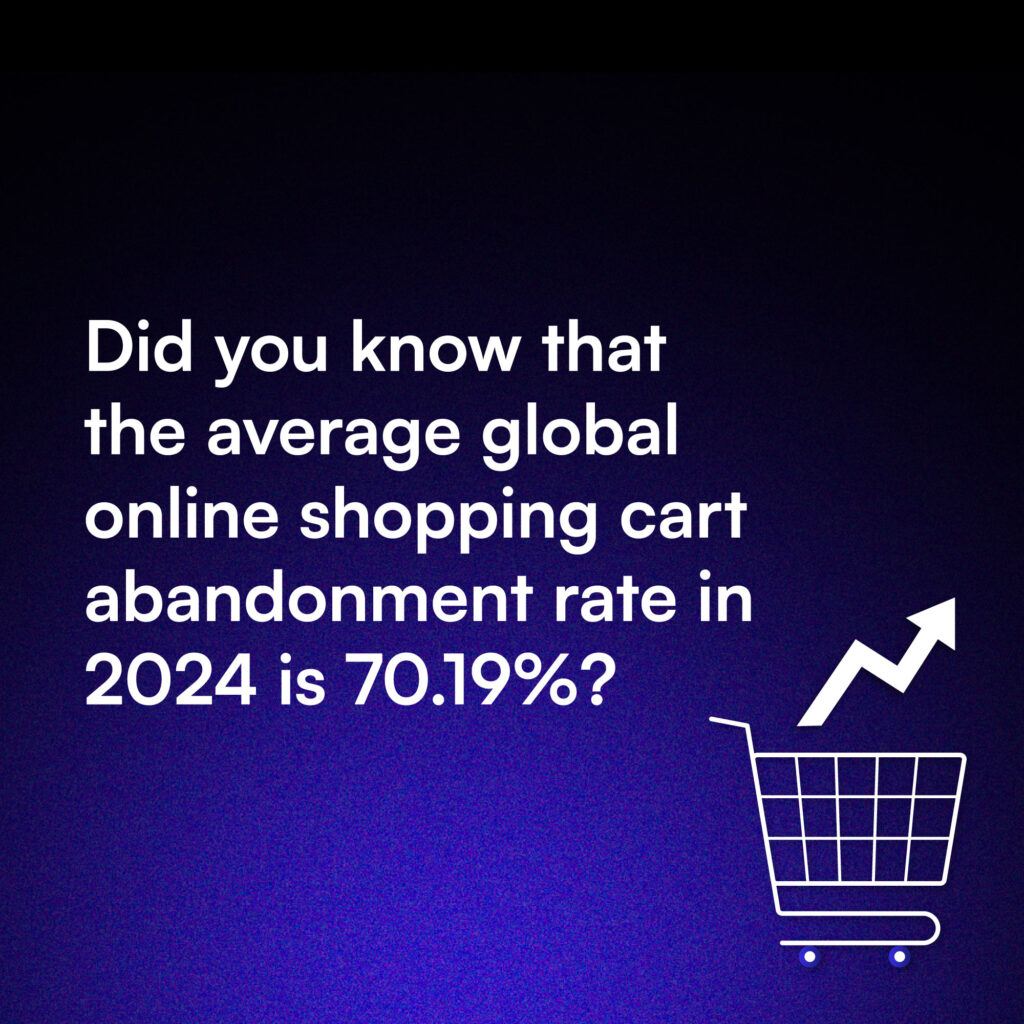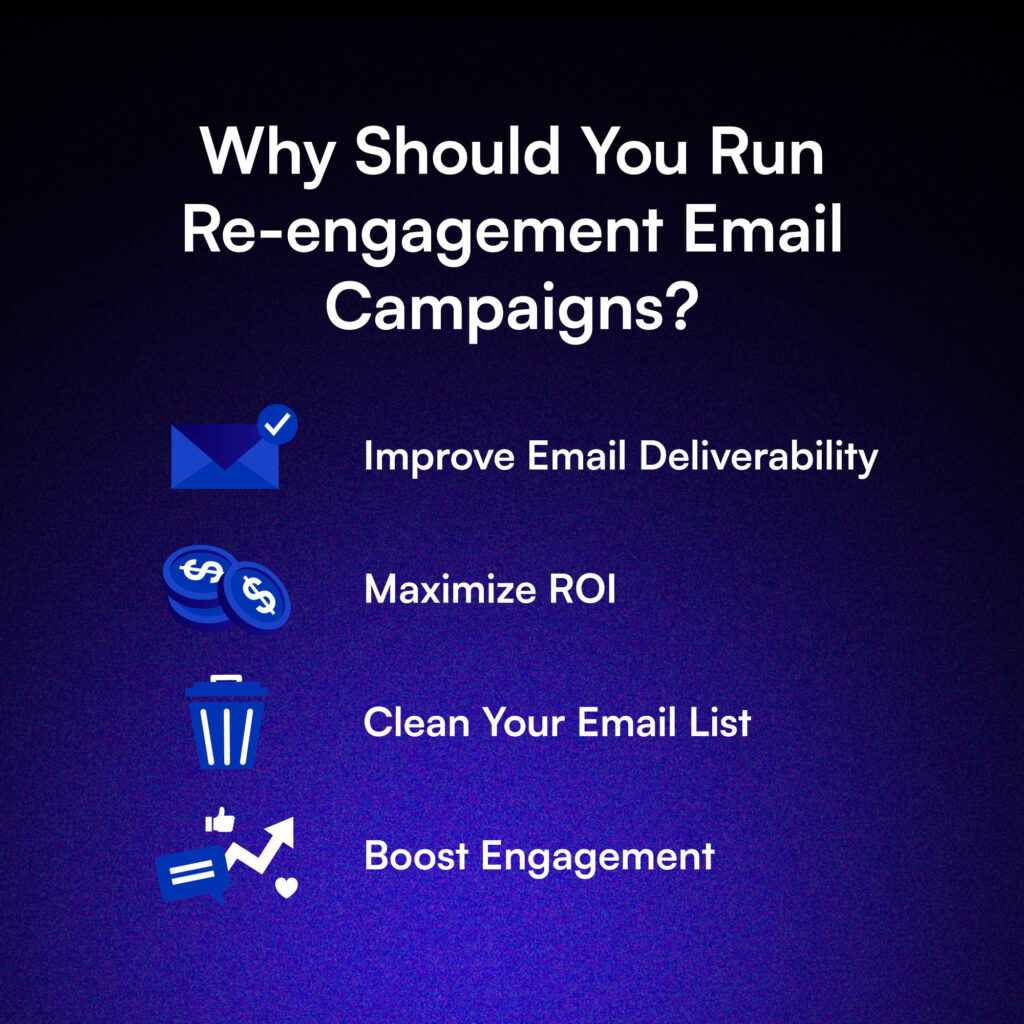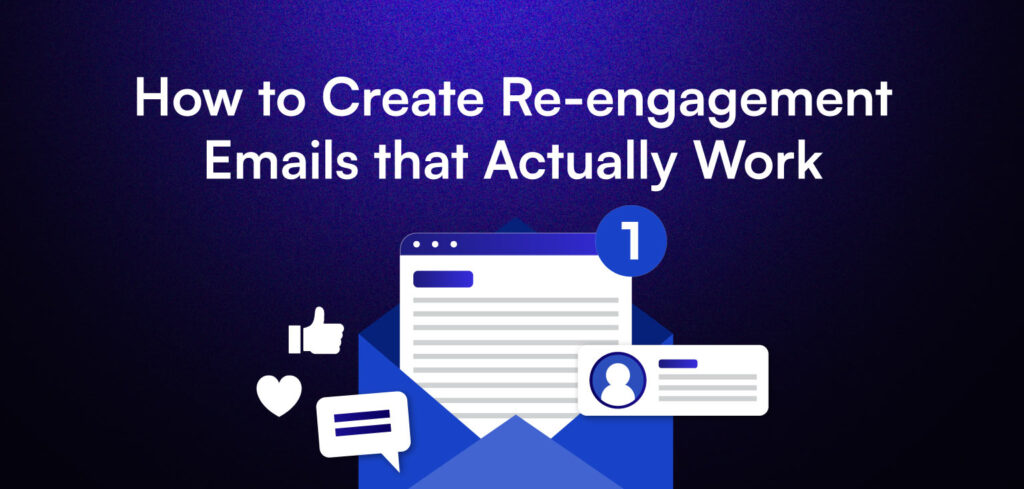What is a Re-engagement Email?

These emails will recapture the interest of these inactive subscribers and encourage them to re-engage themselves with your brand. They serve as reminders to assure customers that you’re still here and that your content or offers will be ready whenever they decide to come back.
Are Re-engagement Emails the same as Winback Emails?
In many ways, it is very easy to get confused between re-engagement and winback emails. Yet, they are not exactly the same; the objectives of these two kinds of emails differ a little:
Re-engagement emails
Winback Emails

Why Should You Run Re-engagement Email Campaigns?
Any email marketing strategy needs to have a re-engagement email campaign, and here’s why:

1. Improve Email Deliverability: Sending emails to inactive subscribers can damage your deliverability rate if you do it too often. Running re-engagement email campaigns helps to pinpoint the unengaged contacts that ought to be culled, thereby increasing deliverability in general.
2. Maximize ROI: Re-engaging existing subscribers will always be cheaper than acquiring new subscribers. When you use the re-engagement emails, you are touching an audience already familiarized with your brand. Therefore, you can skip the intro and get right straight to providing offers. It will save you time and effort—therefore, it saves you money!
3. Clean Your Email List: Engaged subscribers tend to convert more. Cleaning out the list of inactive subscribers will give you a healthier and more engaged email list.
4. Boost Engagement: Re-engagement emails remind subscribers of the value of your brand. Effective emails can re-ignite interest in your customers and boost open and click-through rates.
When Do You Need a Re-Engagement Campaign?
1. Open rates have decreased: In case your subscribers start opening fewer emails, you need to start sending a re-engagement email campaign.
2. Click-through rates are dropping: Low engagement means that your audience is no longer interested in your messages. Hence, a re-engagement email can revive their interest in your content.
3. Sales have flattened: When the sales have slowed down, it is most likely that a decrease in interest from your email list has caused it. In such cases, re-engagement emails play a crucial role in revitalizing interest and boosting sales again.
Tips for Successful Re-Engagement Campaigns
Now that you know how important re-engagement campaigns are, let’s discuss how to write them effectively!
1. Segment Your Inactive Subscribers
2. Craft a Brain-Tickling Subject Line
- “We Miss You! Here’s 10% Off to Welcome You Back”
- “Still Interested? Let’s Reconnect!”
- “Is This Goodbye? We Don’t Want to Lose You”
3. Personalization of Your Message
4. Motivation
- 15% off their next purchase
- Free shipping on their next order
- A special gift with your purchase


